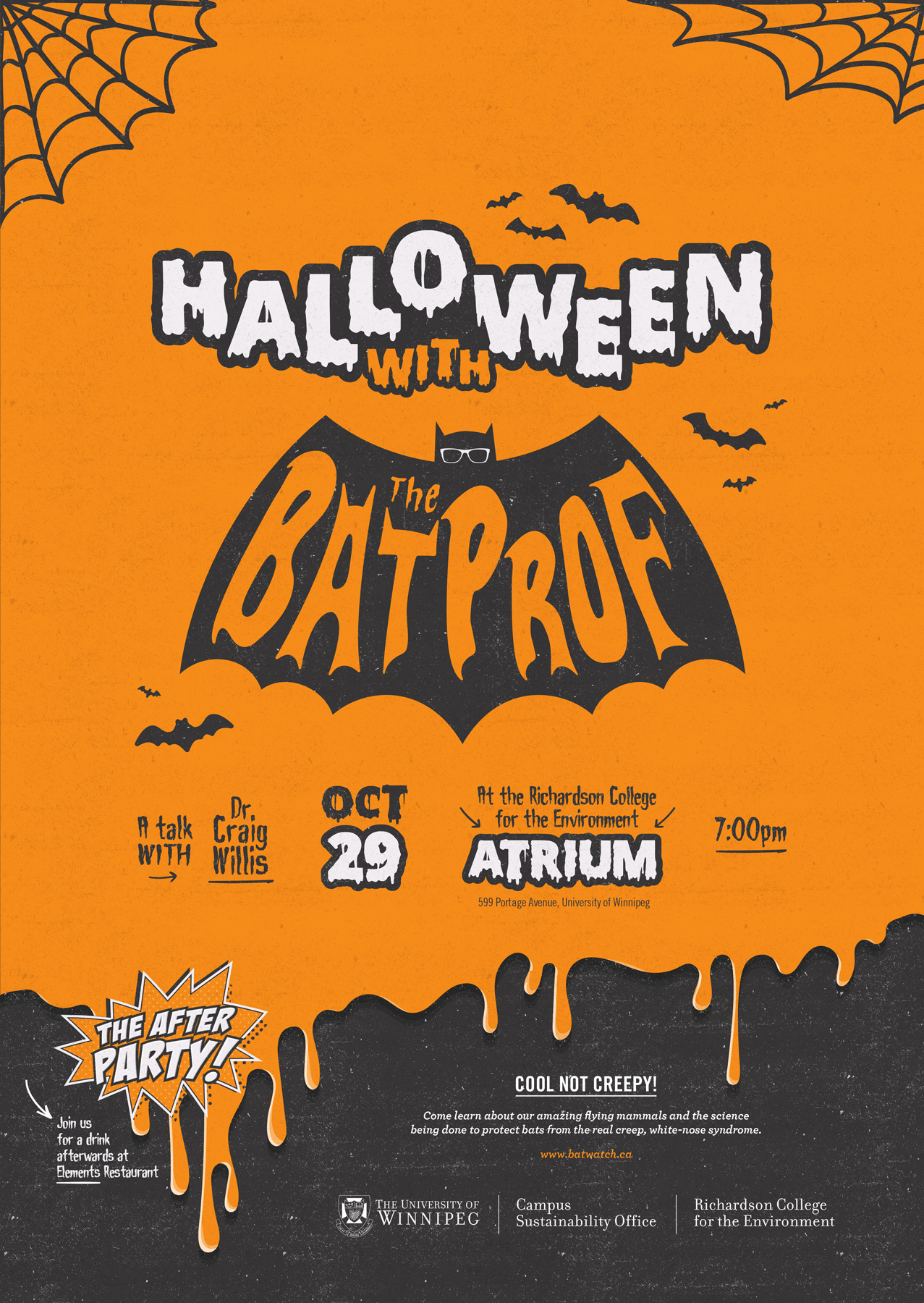Halloween with the Bat Prof
Mon. Oct. 29 07:00 PM
- Mon. Oct. 29 09:00 PM
Location: Richardson College for the Environment Atrium (599 Portage Ave)
The Richardson College for the Environment and the Campus Sustainability Office are hosting an evening of learning and spooky Halloween fun featuring the work of Dr. Craig Willis (AKA “the Bat Prof”) on October 29th.
The event begins at 7:00 P.M. in the RCFE Atrium with a presentation and discussion. At 8:00 P.M. will move upstairs to Elements to have some drinks and snacks.
Be sure to share this event with your friends and colleagues, and feel free to wear a costume!
This will be the first of many such events showcasing environmental research at UWinnipeg and making new leads accessible to a wider audience. Please contact the CSO us if you have a research related event you would like to plan with us!

Cool not Creepy! Learn about our amazing flying mammals and the science being done to protect bats from the real creep, white-nose syndrome.
Bats have a spooky reputation but they are amazingly interesting as well as ecologically and economically important. Bats are the only mammals that can fly under their own power and that ability has led to their remarkable diversity with over 1,200 species worldwide. In the temperate world, bats provide important ecosystem services contributing billions of dollars in free pest control to farmers across North America. In the tropics, in addition to eating pests of crops and forests, bats disperse seeds and are the primary pollinators of many wild, and some agricultural, tropical plants. Sadly, however, bats are also in big trouble. A devastating fungal disease called white-nose syndrome (WNS) has led to a staggering collapse of multiple North American bat species in what has been called the fastest decline of wild mammals in recorded history. The fungus that causes WNS was introduced, almost certainly by people, to one hibernation cave in New York State about 10 years ago. Since then, the disease has spread like wildfire across the eastern half of the continent killing millions of bats with real consequences for agriculture and even human health. Research done right here at the University of Winnipeg has been at the forefront of efforts to understand and mitigate the impacts of WNS on bat populations. Dr. Willis will talk about some amazing facts about bats and progress that has been made in the fight against WNS.
Bio: Dr. Craig Willis was hired as a faculty member at the University of Winnipeg in 2006, was the University’s first Chancellor’s Research Chair from 2011 to 2014 and is currently a Professor of Biology. He and his students work on the ecology, physiology and conservation of small, wild mammals, especially bats, and have been working hard in the fight against WNS since the disease was discovered in 2007. They have published some of the most influential research about WNS including the first evidence that the causal fungus was an invasive species from Eurasia. Dr. Willis has published over 100 peer-reviewed articles and chapters, and his group’s research on WNS has been widely covered in the national and international media including on CBC’s “The National”, “The Current” and “Quirks and Quarks” and by BBC News, The Guardian, The Globe and Mail and The Wall Street Journal. Dr. Willis became fascinated by bats as an undergraduate on a two-week field course with three amazing professors. This course convinced him of the power of great undergraduate teaching to affect the lives of students and that studying animals in the forest would be way more fun than going to law school.
